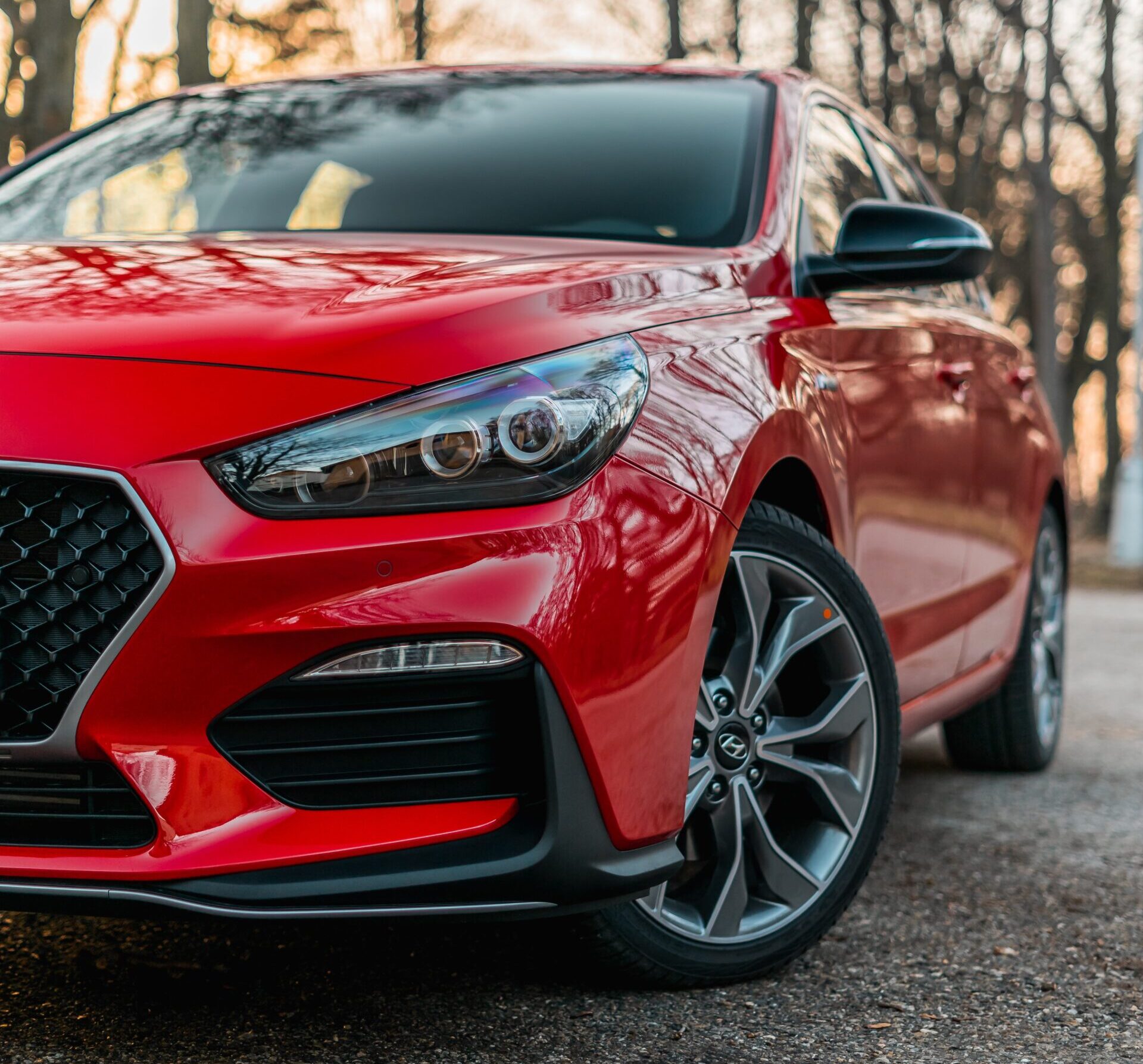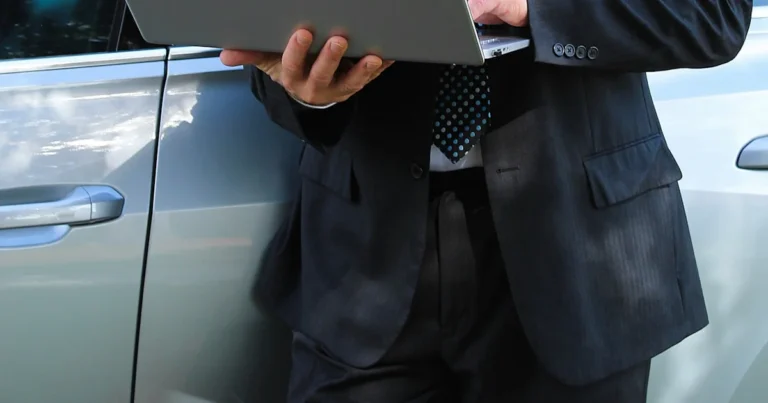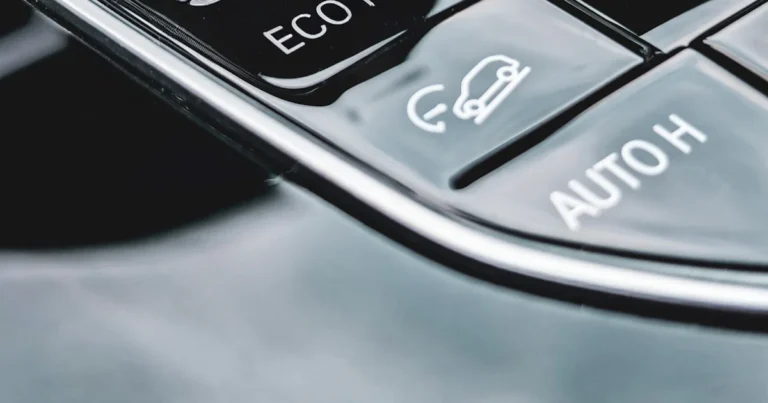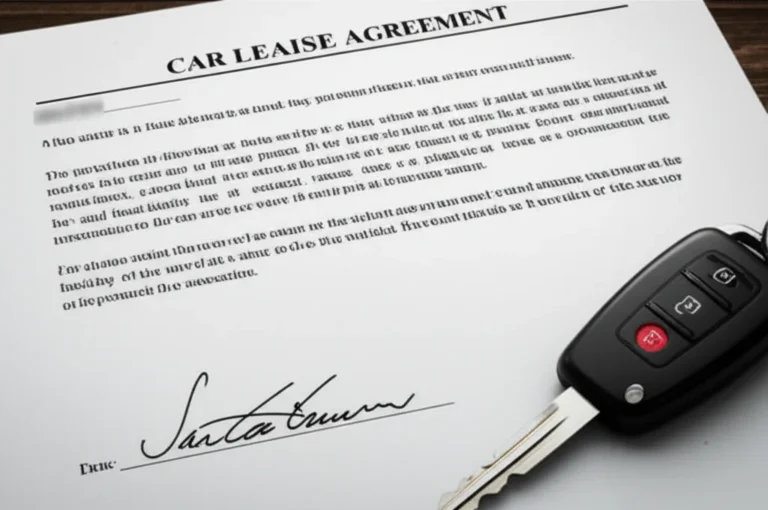Support our educational content for free when you purchase through links on our site. Learn more
Are Zero Down Car Leases Really Free? 7 Hidden Fees to Know in 2025 🚗
Thinking a zero down car lease means driving off for free? Think again! While the idea of snagging a brand-new ride without dropping a dime upfront sounds like a dream come true, the reality is often sprinkled with hidden fees and surprise charges that can turn your “free” lease into a costly headache.
Our team at Car Leases™ has seen countless drivers lured by flashy zero down ads, only to get blindsided by acquisition fees, disposition charges, and those dreaded excess mileage penalties. Stick with us, and we’ll unravel the truth behind zero down leases, reveal the sneaky costs dealers don’t shout about, and share insider tips to help you negotiate like a pro. Plus, we’ll share when zero down leasing actually makes financial sense—and when it’s better to walk away.
Ready to decode the fine print and save your wallet? Let’s dive in!
Key Takeaways
- Zero down doesn’t mean zero cost: You’ll still pay upfront fees like first month’s payment, taxes, and acquisition fees.
- Monthly payments are higher: Without a down payment, you’re financing the full depreciation.
- Watch out for hidden fees: Disposition fees, excess mileage charges, and wear-and-tear penalties can add up fast.
- Credit score matters: The best zero down deals are reserved for excellent credit profiles.
- Negotiate everything: From the car’s price to the money factor and fees—don’t accept the first offer.
- Zero down leases suit cash-conscious drivers with disciplined mileage habits.
👉 Shop Zero Down Lease Deals:
- Honda Zero Down Leases | Toyota Zero Down Leases | BMW Zero Down Leases
- Audi Zero Down Leases | Mercedes-Benz Zero Down Leases
Table of Contents
- ⚡️ Quick Tips and Facts About Zero Down Car Leases
- 🔍 The Real Deal: What Does “Zero Down” Mean in Car Leasing?
- 🕰️ A Brief History and Evolution of Zero Down Leasing Offers
- 💰 Hidden Fees and Charges: What Dealers Don’t Always Tell You
- 1️⃣ Top 7 Sneaky Costs to Watch Out for in Zero Down Leases
- 📊 Comparing Zero Down Leases vs. Traditional Leases: Pros and Cons
- 🚗 How Your Credit Score Impacts Zero Down Lease Offers
- 🛠️ Maintenance, Wear & Tear: The Hidden Cost Traps in Leases
- 🔄 End-of-Lease Charges: What to Expect When Your Lease Ends
- 💡 Insider Tips: Negotiating Zero Down Leases Like a Pro
- 📅 When Is Zero Down Leasing Actually a Smart Move?
- 🚫 When to Say No: Red Flags in Zero Down Lease Deals
- 🔧 Alternatives to Zero Down Leases: Other Ways to Drive Now, Pay Later
- 🎯 Get a Lease on Leasing: Mastering the Art of Zero Down Deals
- 🧠 Consumer Insights: What Real Drivers Say About Zero Down Leases
- 📚 Conclusion: Are Zero Down Car Leases Really Free?
- 🔗 Recommended Links for Smart Car Leasing
- ❓ FAQ: Your Burning Questions About Zero Down Leases Answered
- 📖 Reference Links and Further Reading
Here at Car Leases™, we’ve seen it all. The flashy ads, the promises of driving a brand-new car for “nothing down,” the sheer allure of that new car smell without emptying your savings account. But let’s get real for a second. Are those zero down car lease deals the golden ticket they appear to be? Or are they a rabbit hole of hidden fees and surprise charges? 🐰
We’re pulling back the curtain to give you the unvarnished truth. Buckle up, because we’re about to take a deep dive into the world of $0 down leases.
⚡️ Quick Tips and Facts About Zero Down Car Leases
Before we get into the nitty-gritty, here’s the cheat sheet. If you remember nothing else, remember this:
- “Zero Down” Isn’t “Zero Dollars”: ✅ You’ll almost always have to pay something at signing. This typically includes the first month’s payment, taxes, title, license, and registration fees.
- Higher Monthly Payments: ❌ A zero-down lease means you’re not making a “cap cost reduction” payment. That entire cost is rolled into your monthly payments, making them higher than a lease with a down payment.
- Credit Score is King: 👑 These deals are usually reserved for customers with excellent credit. If your score is less than stellar, you might not qualify. Check out our guide on Credit Score and Car Leasing for more info.
- Fees, Fees, and More Fees: From acquisition fees at the start to disposition fees at the end, the costs can add up. As the Minnesota Attorney General’s office warns, “The low payments that sounded so good in an ad can conceal hidden costs that add up to a poor deal.”
- Negotiation is Your Superpower: 💪 Almost everything in a lease is negotiable, from the car’s price (the capitalized cost) to certain fees. The Oregon Department of Justice rightly states that everything is negotiable, including the vehicle price and financing.
- GAP Insurance is a Must: Most leases include it, but always double-check. This crucial coverage protects you if the car is totaled and you owe more than it’s worth.
🔍 The Real Deal: What Does “Zero Down” Mean in Car Leasing?
Let’s clear the air. When a dealer advertises a “zero down” or “sign and drive” event, they are specifically referring to one thing: no capitalized (cap) cost reduction.
Think of a cap cost reduction as a down payment on a lease. It’s a chunk of money you pay upfront to lower the total amount you’re leasing, which in turn lowers your monthly payments.
So, a zero-down lease simply means you’re not putting any money toward reducing the vehicle’s price. You’re financing the entire depreciation of the car over the lease term.
What you STILL have to pay at signing:
- First Month’s Payment: You can’t drive off without paying for your first month!
- Taxes: Sales tax on the monthly payment (or sometimes the full value, depending on the state).
- Title and Registration Fees: The good old DMV needs its cut.
- Documentation Fee (“Doc Fee”): A fee the dealership charges for processing the paperwork. This can be negotiable.
- Acquisition Fee: A fee charged by the leasing company to initiate the lease.
So, is it truly “free” to start? Absolutely not. It’s just less expensive on day one.
🕰️ A Brief History and Evolution of Zero Down Leasing Offers
Remember the days when leasing was reserved for luxury cars and businesses? We do! It was a niche corner of the auto world. But as car prices climbed, manufacturers and dealers needed a way to keep monthly payments looking attractive. Enter the modern car lease, a staple of Auto Financing Options.
The “zero down” lease was the next logical step—a marketing masterstroke designed to get people in the door. It addresses the biggest hurdle for many buyers: the hefty upfront payment. By removing that barrier, dealers could appeal to a much wider audience.
Initially, these offers were rare, popping up during holiday sales events. Now, they’re a common sight, especially for mainstream models from brands like Honda and Toyota. They’ve become a powerful tool for moving inventory, especially at the end of a model year. This evolution reflects a shift in consumer behavior—we want affordability and flexibility, and a zero-down lease seems to offer both. But does it really?
💰 Hidden Fees and Charges: What Dealers Don’t Always Tell You
This is where the dream of a “free” start can turn into a financial headache. A lease agreement is a complex document, and there are plenty of places for extra costs to hide. Here’s a breakdown of the usual suspects.
Upfront Costs (The “Nothing” in “Nothing Down”)
- Acquisition Fee: Also called a bank fee, this is charged by the leasing company (the lender) to set up the lease. It’s often non-negotiable, but sometimes it can be rolled into the monthly payments.
- Documentation Fee: The dealer’s fee for handling all the paperwork. The amount varies by state and dealer but should be questioned.
- Security Deposit: While less common on modern leases, some still require a refundable deposit to cover any potential end-of-lease charges.
Back-End Costs (The Sting at the End)
- Disposition Fee: This is a fee for turning the car back in. The leasing company charges it to cover the costs of cleaning, inspecting, and preparing the vehicle for resale. You can often avoid this if you lease another car from the same brand.
- Excess Wear and Tear: Dings, scratches, stained upholstery, bald tires—if the car’s condition is worse than what the lease agreement defines as “normal,” you’ll pay for reconditioning.
- Excess Mileage Charges: This is the big one. If you go over your allotted mileage, you’ll pay a penalty for every extra mile, typically 15 to 25 cents per mile. As the Minnesota AG’s office calculates, “an extra 2,000 miles a year on a 3-year lease at a charge of 15 cents per mile could cost you $900.”
1️⃣ Top 7 Sneaky Costs to Watch Out for in Zero Down Leases
Let’s put these fees under the microscope. Here are the top sneaky costs that can inflate the price of your “zero down” deal.
- Inflated Money Factor: The “money factor” is essentially the interest rate on a lease. It’s expressed as a small decimal (e.g., .00125). Some dealers may mark this up to increase their profit. Always ask for the base money factor and compare it to what you’re being offered.
- Negative Trade-in Equity: Trading in a car you still owe money on? If you’re “upside-down” (owe more than the car is worth), dealers will happily roll that negative equity into your new lease. This can add a significant amount to your monthly payment without you even realizing it.
- Unnecessary Add-ons: Be wary of the finance manager’s pitch for extras like VIN etching, fabric protection, or nitrogen-filled tires. These are high-profit items for the dealership and often provide little value on a car you’ll only have for a few years.
- Mileage Miscalculation: Be brutally honest with yourself about how much you drive. Underestimating your mileage to get a lower payment is a recipe for disaster. Paying for extra miles upfront is always cheaper than paying the penalty at the end.
- The “Wear and Tear” Waiver: Some dealers sell insurance policies to cover excess wear and tear. While it might sound tempting, read the fine print carefully. They often have many exclusions and may not be worth the cost.
- Early Termination Fees: Life happens. If you need to end your lease early, the penalties can be severe, often requiring you to pay most of the remaining payments.
- Purchase Option Price: If you think you might want to buy the car at the end of the lease, check the purchase option price in the contract. Make sure it’s a realistic reflection of the car’s expected value.
📊 Comparing Zero Down Leases vs. Traditional Leases: Pros and Cons
So, which is better? A zero-down lease or a traditional lease with a down payment? There’s no single right answer—it depends entirely on your financial situation and priorities.
| Feature | ✅ Zero Down Lease | ❌ Traditional Lease (with Down Payment) |
|---|---|---|
| Upfront Cost | Low. Only first month’s payment, taxes, and fees are due at signing. | High. Requires a significant cap cost reduction payment. |
| Monthly Payment | Higher. You’re financing the full depreciation. | Lower. The down payment reduces the amount being financed. |
| Risk | Lower. If the car is stolen or totaled early on, you lose less cash. | Higher. You could lose your entire down payment, as it’s not always fully covered by insurance. |
| Cash Flow | Better. Frees up cash for other investments or emergencies. | Worse. Ties up a large amount of cash upfront. |
| Best For | Someone with excellent credit who wants to preserve their cash. | Someone who wants the lowest possible monthly payment and has cash to spare. |
One of our team members, Mike, learned this the hard way. He put a large down payment on a BMW 3 Series lease to get a super low monthly payment. Three months later, the car was totaled in a parking lot accident. While GAP insurance covered the difference between the car’s value and what he owed, his entire down payment went up in smoke. A zero-down lease would have saved him that cash.
🚗 How Your Credit Score Impacts Zero Down Lease Offers
Your credit score is the gatekeeper for the best lease deals. Think of it as your financial report card.
- Excellent Credit (740+): You’re a VIP. You’ll likely qualify for the advertised “zero down” specials and the lowest “money factor” (interest rate). Lenders see you as a low-risk borrower.
- Good Credit (680-739): You’ll probably get approved, but you might not get the absolute best terms. The lender may ask for a small down payment or offer a slightly higher money factor.
- Fair or Poor Credit (Below 680): Getting a zero-down lease will be tough. Lenders may require a significant down payment, a co-signer, or deny the application altogether.
Before you even step into a dealership, know your credit score. You can get it for free from various online services or your credit card company. This knowledge is power and prevents the dealer from holding all the cards. For a deeper dive, explore our articles on Credit Score and Car Leasing.
🛠️ Maintenance, Wear & Tear: The Hidden Cost Traps in Leases
One of the biggest misconceptions about leasing is that it’s a maintenance-free experience. While you’re covered by the factory warranty for major issues, you are still responsible for all routine maintenance.
- Oil Changes & Tire Rotations: These are on your dime. Following the manufacturer’s recommended service schedule is part of your lease agreement.
- Tires: If your tires are worn below the minimum tread depth specified in your lease contract when you turn it in, you’ll have to pay for a new set. And they have to be of a similar quality to the originals!
- Brakes: Worn-out brake pads and rotors are also your responsibility.
This is a point of contention for critics like Dave Ramsey, who argues that since you’re responsible for maintenance just like an owner, leasing is a “rip-off.” While we see the benefits of leasing, it’s a valid point. You’re maintaining a car you’ll never own. However, many drivers counter this by pointing out that some leases, particularly from luxury brands like Audi or Mercedes-Benz, include complimentary scheduled maintenance for the first few years, which can be a huge perk.
🔄 End-of-Lease Charges: What to Expect When Your Lease Ends
The end of your lease can bring a few financial surprises if you’re not prepared. Here’s what to brace for:
- The Pre-Inspection: About 90 days before your lease ends, the leasing company will offer a complimentary pre-inspection. DO THIS! An inspector will come to your home or office and give you a detailed report of any chargeable damage. This gives you time to fix any issues yourself, which is almost always cheaper than letting the leasing company do it.
- Excess Wear and Tear Bill: This can include anything from door dings and scratched wheels to interior stains. The lease agreement will have a guide (often with a “credit card test” for scratches) defining what’s acceptable.
- Mileage Overage: If you drove more than your contract allowed, the bill will come due. There’s no negotiating this after the fact.
- Disposition Fee: As mentioned earlier, this fee covers the dealer’s cost to process the returned vehicle. It’s usually a few hundred dollars.
Being proactive is key. Clean the car thoroughly, fix small scratches, and make sure you have all the original equipment (like both sets of keys and the floor mats) to avoid getting nickel-and-dimed.
💡 Insider Tips: Negotiating Zero Down Leases Like a Pro
You’ve got this! Don’t let the process intimidate you. As the Oregon Department of Justice advises, you should treat the car purchase, trade-in, and financing as separate transactions to understand the true cost.
Here are our team’s golden rules for negotiation:
- Rule #1: Negotiate the Price of the Car First. The single biggest factor in your lease payment is the capitalized cost (the price of the car). Negotiate this number as if you were buying it. Use sites like TrueCar and Edmunds to find out what others are paying.
- Rule #2: Verify the Money Factor. Ask for the “buy rate” money factor from the lender. If the dealer has marked it up, call them on it. A small change here can save you hundreds over the lease term.
- Rule #3: Question Every Fee. Ask the finance manager to explain every single line item. Is the doc fee negotiable? Can the acquisition fee be waived or rolled in? Don’t sign until you understand and agree with every charge.
For a masterclass in negotiation, the first YouTube video we embedded, titled “Don’t Get SCREWED on a Car Lease | 3 GOLDEN RULES to Negotiate a Car Lease” by CarEdge, is an invaluable resource. You can jump to it here: #featured-video. It covers these points in fantastic detail.
📅 When Is Zero Down Leasing Actually a Smart Move?
Despite the potential pitfalls, a zero-down lease can be a brilliant financial move in the right circumstances.
✅ It’s a good idea if:
- You have excellent credit and can qualify for the best promotional offers.
- You want to preserve your cash for other investments, a home down payment, or an emergency fund.
- You understand the total cost of the lease and are comfortable with the higher monthly payment.
- You’re disciplined with your mileage and can stay within the agreed-upon limits.
- You want the lowest possible risk. By not putting money down, you protect yourself financially if the car is totaled early in the lease term.
🚫 When to Say No: Red Flags in Zero Down Lease Deals
Sometimes, the best deal is the one you walk away from. Here are some major red flags to watch out for:
- ❌ The dealer won’t disclose the money factor or capitalized cost. This is a huge warning sign. They are legally required to provide this information.
- ❌ They pressure you to focus only on the monthly payment. This is a classic tactic to distract you from the total cost of the lease.
- ❌ The numbers on the final contract don’t match what you agreed upon. Always double-check the math before you sign anything.
- ❌ They insist on rolling a large amount of negative equity into the lease. This can turn a good deal into a terrible one, trapping you in a cycle of debt.
- ❌ You feel rushed or pressured. A reputable dealer will give you time to read the contract and make an informed decision. If you feel uncomfortable, walk away.
🔧 Alternatives to Zero Down Leases: Other Ways to Drive Now, Pay Later
A zero-down lease isn’t your only option for getting into a new car with minimal upfront cash. Consider these alternatives:
- Low Down Payment Lease: Putting just a small amount down (perhaps a thousand dollars or so) can significantly lower your monthly payment without tying up too much cash.
- Financing with Zero Down: Many manufacturers offer 0% or low-APR financing deals for qualified buyers that also require no down payment. This is a great option if you plan to keep the car long-term. Explore our Auto Financing Options for more.
- Leasing a Certified Pre-Owned (CPO) Vehicle: Some brands, like Lexus and Acura, offer leasing programs on their CPO vehicles. This can be a great way to get a like-new car with a warranty for a much lower payment.
- Lease Takeover Services: Websites like Swapalease allow you to take over someone else’s existing lease. This can be a good way to get into a short-term lease with no money down.
🎯 Get a Lease on Leasing: Mastering the Art of Zero Down Deals
To truly win at the leasing game, you need a strategy. It’s not about finding a loophole; it’s about being an informed and prepared consumer.
- Do Your Homework: Research the specific vehicle you want. Know the invoice price, the current market value, and any available incentives.
- 👉 Shop Around: Get quotes from multiple dealerships. Let them know you’re comparing offers. This competition works in your favor.
- Arrange Financing Separately (as a benchmark): Get pre-approved for a car loan from your bank or a credit union. This gives you a baseline to compare the lease offer against.
- Read Everything: Yes, the entire contract. It’s boring, but it’s where the devilish details hide. Don’t sign until you understand it all.
- Be Prepared to Walk: Your greatest power is your ability to say “no, thank you” and leave. If the deal doesn’t feel right, it probably isn’t.
🧠 Consumer Insights: What Real Drivers Say About Zero Down Leases
The debate between leasing and buying is passionate, and consumers have strong opinions. Looking at comments on a post by financial guru Dave Ramsey, who famously calls leasing a “rip-off,” reveals a more nuanced picture.
- The Pro-Lease Camp: Many drivers love the predictability and convenience. One commenter noted, “All oil changes are paid for with my lease. I give the car back and am not stuck in a loan for a depreciated vehicle.” Another said, “I’m walking away free to lease a different vehicle. So many people are stuck in loans for a vehicle that is under water.” For these drivers, leasing is a strategic choice to always have a new, reliable car under warranty without the long-term commitment of a loan.
- The Anti-Lease Camp: Others echo Ramsey’s sentiment, viewing leasing as endlessly renting. The core argument is that you’re making perpetual payments without ever building equity.
- The Middle Ground: A growing number of consumers see leasing as a tool that works for specific situations. One person astutely commented, “Buy stuff that appreciates…lease/rent stuff that depreciates.” This perspective treats a car as an appliance with a transportation cost, and leasing can be the most cost-effective way to manage that expense over a short period.
Ultimately, these insights show there’s no one-size-fits-all answer. Your financial situation, driving habits, and personal philosophy on ownership all play a role in whether a zero-down lease is right for you.
📚 Conclusion: Are Zero Down Car Leases Really Free?
So, are zero down car leases truly free? The short answer: Nope, not really. But that doesn’t mean they’re a bad deal! Zero down leases are a clever way to reduce your upfront cash outlay and get behind the wheel of a new car with minimal hassle. However, the devil is in the details.
What we’ve learned:
- Zero down means no cap cost reduction, but you still pay upfront fees like your first month’s payment, taxes, acquisition fees, and doc fees. So, it’s not “free” to start driving, just less expensive upfront.
- Monthly payments are higher because you’re financing the entire depreciation without a down payment to soften the blow.
- Hidden fees lurk everywhere — from disposition fees to excess mileage and wear-and-tear charges. These can add hundreds or even thousands of dollars if you’re not careful.
- Your credit score is critical to qualifying for the best zero down deals and lowest interest rates.
- Negotiation is your secret weapon. Don’t accept the first offer. Push for a fair capitalized cost, a low money factor, and question every fee.
- Zero down leases aren’t for everyone. If you want to minimize monthly payments or plan to keep your car long-term, a traditional lease or financing might be better.
- Maintenance and end-of-lease costs can surprise you, so plan ahead and take advantage of pre-inspections and included maintenance programs if available.
Our team at Car Leases™ recommends zero down leases only if you have excellent credit, understand the total cost, and want to preserve your cash flow. If you’re disciplined about mileage and vehicle care, they can be a smart way to drive a new car without a big upfront hit.
Remember Mike’s story? That zero down lease would have saved him a chunk of cash when his BMW was totaled. That’s the kind of peace of mind zero down leasing can offer.
In the end, zero down leases are a tool — use them wisely, and they can work for you. Abuse the fine print or ignore the fees, and you’ll pay the price.
🔗 Recommended Links for Smart Car Leasing
Ready to explore zero down lease deals or compare your options? Check out these trusted platforms and official brand sites to start your search:
-
Honda Zero Down Lease Deals:
TrueCar Honda Zero Down Leases | Edmunds Honda Lease Deals | Honda Official Website -
Toyota Zero Down Lease Deals:
TrueCar Toyota Lease Offers | Edmunds Toyota Lease Deals | Toyota Official Website -
BMW Zero Down Lease Deals:
TrueCar BMW Lease Offers | Edmunds BMW Lease Deals | BMW USA Official Website -
Audi Zero Down Lease Deals:
TrueCar Audi Lease Offers | Edmunds Audi Lease Deals | Audi USA Official Website -
Mercedes-Benz Zero Down Lease Deals:
TrueCar Mercedes-Benz Lease Offers | Edmunds Mercedes-Benz Lease Deals | Mercedes-Benz USA Official Website
❓ FAQ: Your Burning Questions About Zero Down Leases Answered
What does zero down car lease really mean?
A zero down car lease means you’re not paying a capitalized cost reduction (down payment) upfront to reduce your lease balance. However, you still pay other upfront fees like your first month’s payment, taxes, acquisition fees, and registration. It’s a way to reduce the initial cash outlay but not a free ride.
Are there usually hidden fees in zero down car leases?
Yes. While zero down leases reduce upfront payments, they often come with fees such as acquisition fees, documentation fees, disposition fees, excess mileage charges, and wear-and-tear penalties. These fees can add up if you’re not careful. Always read the fine print and ask for a detailed breakdown.
How can I avoid extra charges when leasing a car with zero down payment?
- Stick to your mileage limits to avoid excess mileage fees.
- Keep the car in good condition to avoid wear-and-tear charges.
- Take advantage of pre-lease-end inspections to fix issues yourself.
- Negotiate fees upfront and question any that seem unnecessary.
- Consider leasing brands or models that include maintenance packages.
What are the common fees to expect in a zero down car lease?
- Acquisition fee (bank fee)
- Documentation fee (dealer processing)
- First month’s payment
- Taxes and registration fees
- Disposition fee at lease end
- Excess mileage fees (per mile over limit)
- Excess wear and tear charges
- Possible security deposit (rare)
Is zero down leasing better than a traditional car lease?
It depends. Zero down leases reduce upfront cash but increase monthly payments since you’re financing the full depreciation. Traditional leases require a down payment but lower monthly payments. Zero down is better if you want to preserve cash and have excellent credit; traditional leases may be better if you want the lowest monthly payment.
How do zero down leases affect my monthly payments?
Zero down leases increase your monthly payments because you’re financing the entire depreciation without any upfront reduction. This means your monthly payment will be higher compared to a lease with a down payment.
Can I negotiate fees in a zero down car lease deal?
Absolutely! Everything from the capitalized cost (vehicle price) to the money factor and some fees like the documentation fee can be negotiated. Ask for the buy rate money factor and challenge any inflated fees. Don’t be afraid to walk away if the deal doesn’t feel right.
What is the money factor, and why is it important?
The money factor is the lease’s interest rate expressed as a small decimal. It determines how much interest you pay over the lease term. A lower money factor means less interest and lower monthly payments. Always ask for the base money factor and compare it to your offer.
Can I lease a used or certified pre-owned car with zero down?
Yes, some manufacturers and dealers offer leases on certified pre-owned vehicles, sometimes with zero down. These can be great deals with lower payments, but the terms may differ from new car leases. Check with brands like Lexus and Acura for CPO lease programs.
What happens if I want to end my zero down lease early?
Early termination fees can be steep, often requiring you to pay most of the remaining lease payments plus penalties. It’s best to avoid ending a lease early unless you have a lease transfer option or can negotiate with the leasing company.
📖 Reference Links and Further Reading
- Minnesota Attorney General’s Guide on Leasing and Hidden Fees
- Dave Ramsey’s Perspective on Car Leasing
- Buying a Vehicle – Oregon Department of Justice : Consumer Protection
- Edmunds Lease Guide
- TrueCar Lease Offers
- Consumer Reports on Car Leasing
- Federal Trade Commission on Leasing
We hope this comprehensive guide from Car Leases™ helps you navigate the tricky waters of zero down car leases. Remember, knowledge is your best co-pilot! 🚗💨






